11 Best first-time Europe itineraries for 1, 2, or 3 weeks
Europe is going to be very busy in the summer of 2024 as the world is back to normal and travel demand is higher than ever. One other key factor is that most European currencies are still hovering at lower levels historically compared to the US dollar, which means that Europe will feel somewhat cheap again this year. In fact, according to our World Backpacker Index, European cities like Lisbon, Madrid, and Munich are about 30% cheaper to visit than Boston, Chicago, and New York City. In other words, flying to Europe might seem expensive, but most things will be cheaper once you get there compared to the costs of visiting a large US city.
Below you’ll find 11 of the most popular and best itineraries for a first visit to Europe. Your first visit is not really the time to be different or creative, and the famous destinations tend to be popular for a reason. In other words, it’s kind of silly to visit, say, Bulgaria, if you’ve not yet been to France or Italy. I lay out the best options along with how long to stay in each place as a general guide. I also discuss Mediterranean cruises, which can actually be an amazing way to see a lot of Europe on your first visit, especially if you don’t like going back and forth to train stations and airports every 2 or 3 days.
For a bit of fun you might be interested in the cheapest 5-star hotels in Europe, which start at US$80 per night for really nice hotels. It helps show that if you choose some of the cheaper cities, you can treat yourself to some luxury that you can’t afford in most other places.
This article was last updated in March, 2024.
There are 11 starter itineraries described in detail below
- Classic London and Paris
- England and Scotland
- Paris and Italy
- Mediterranean cruise
- France, Belgium, and Netherlands
- Paris and elsewhere in France
- Italy
- Spain
- Germany
- Switzerland
- Best of cheap eastern Europe
For each itinerary there are suggestions of other destinations that are easy to add on to the main cities.
Note: This article was most recently updated in March, 2024
Building the best itinerary for your first trip to Europe
Below there are 11 popular itineraries for one week in Europe. If you’ve only got a week then choose one of them and assume you’ll return again to conquer more of this amazing part of the world. If you’ve got more time then you can choose from some of the top add-on suggestions for each one.
Start in the most famous cities
Your first visit to Europe is no time to try to be different or edgy. I recommend that you focus on these 5 great cities before you start branching out into cheaper or more obscure places.
Keep your travel days to a minimum
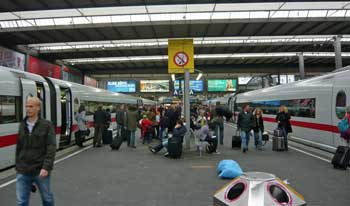
Spend 3 (or 4) nights in almost every major city
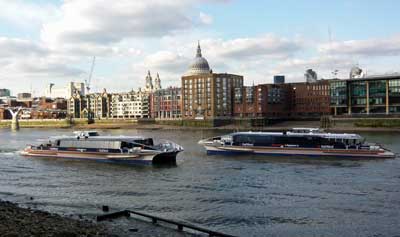
So many first-time visitors are initially planning on spending only 1 or 2 nights in major cities that I wrote a detailed explanation of why 3 nights is ideal for almost all European cities, even if you want to see as much as possible.
3 (or 4) nights will be enough for any city on your first trip
Most first-time visitors are tempted to move too quickly, but it can also be a mistake to move too slowly. It’s really amazing how much you can see in two full sightseeing days. If you spend too long in one city you’ll end up seeing things that are way down your list, while you could be in another city seeing things at the top of your list there.
Choose cities that are easy to reach from each other
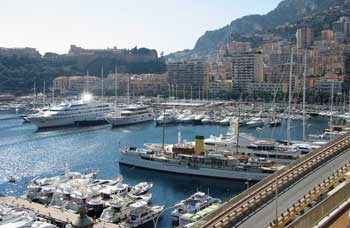
For your first trip it’s best to visit cities that are no more than a 5-hour train ride apart.
Choose cities that are connected by reasonable train rides rather than flights
To build on the point above, finding cheap flights within Europe is easy, but train travel is about a million times more enjoyable and less stressful. You’ll enjoy the train rides almost as much as the cities, so focus on places that are within 5 hours of each other by train.
Start with one of the classic itineraries below, and then add to it if you have more time
If you only have 7 days then you’ll find a list below of classic itineraries that are well-suited to a first visit to Europe. Hopefully you have more than 7 days though, and if you do you can add in one or more of the suggested add-on cities to build an itinerary that appeals most to you.
Best 1-week itineraries for the first time in Europe
Itinerary 1: Classic London and Paris
Fly into either city and take the 2-hour Eurostar train between them
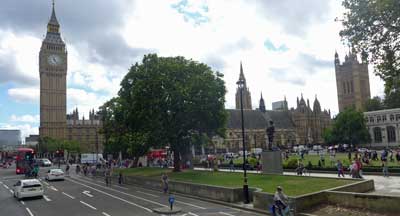
London highlights
- Big Ben and Parliament
- Westminster Abbey and St. Paul’s Cathedral
- Tower of London and Tower Bridge
- West End shows (Broadway equivalent) and classic pubs
- Buckingham Palace and Windsor Castle
Paris is actually far more beautiful than London and the food is famously much better as well. Since Paris gets so many tourists from non-French speaking countries, it’s easy to get by on just English, and the Metro system makes it fast and easy to get around. The architecture of both cities is amazing from the Tower of London, Big Ben, Westminster Abbey to the Louvre and the Eiffel Tower. These cities each pack a huge punch and they are very different from each other as well. Actually, England is arguably the best choice for your first trip to Europe.
Paris highlights
- Eiffel Tower
- Louvre Museum and Museum de Orsay
- Arc de Triomphe and other monuments
- Montmartre neighborhood and Sacré Coeur Cathedral
- Probably the world’s best affordable restaurants and wine
Best add-ons to London and Paris
- Edinburgh (2 or 3 nights, from London)
- Amsterdam (2 or 3 nights, from Paris)
- Bruges and Brussels (2 nights, from Paris)
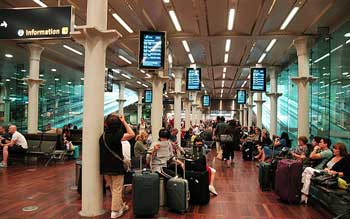
>>>Best one-week London and Paris itinerary in detail
>>>Check London hotel deals
>>>Check Paris hotel deals
Itinerary 2: England and Scotland
- London (3 or 4 nights)
- York (1 night)
- Edinburgh, Scotland (2 or 3 nights)
- Inverness, Scotland (2 or 3 nights)
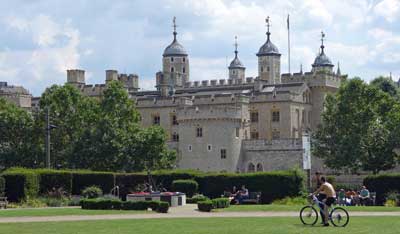
York is a small Roman city with intact city walls and one of the most famous cathedrals in Europe. Edinburgh is not only the capital of Scotland, but it’s easily the second most interesting city in all of Britain. If your time is short, skip York and spend more time in Edinburgh.
If you prefer to focus on the south of England on your first trip then the best option is to go to Bath or nearby Bristol after London. Bath is another of England’s top destinations and it’s a gorgeous city that has been a spa resort for many centuries. It’s also reasonably close to Stonehenge. You can also easily get to Cornwall in England’s southwest corner from Bath, and that’s a whole different and fascinating experience (with nicer weather than up north).
If you’ve got more than a week and want to spend more time in Scotland, especially in the summer months, the place to head to is Inverness. It’s a small town that is considered the gateway to the Scottish Highlands, but it’s an interesting and charming place on its own. You can take day-trips by bus to the highlights of the Highlands including the Isle of Skye and Loch Ness. Between you and me, it’s better to minimize time in Loch Ness or skip it altogether because it’s not one of the more photogenic parts of Scotland and the monster has always been a hoax.
Travel times between the recommended places
- London to York by train: 2 hours
- York to Edinburgh by train: 2.5 hours
- London to Edinburgh by train: 4 hours
- Edinburgh to Inverness by train: 3.5 hours
- London to Bath by train: 85 minutes
Best add-ons to England and Scotland
If you think you want to spend your whole trip in Britain you should have a look at our article on the best itineraries in England, Scotland, and Wales.
>>>Check London hotel deals
>>>Check Edinburgh hotel deals
Itinerary 3: Paris and Italy
- Paris (3 or 4 nights)
- Venice (1 night)
- Florence (2 or 3 nights)
- Rome (3 nights)
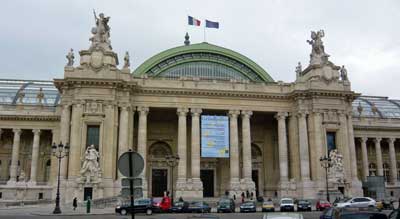
From Paris you can easily fly to Venice (or nearby Treviso) where you should try to spend about 24 hours. Venice is small enough to see in a full day, and so crowded that most people are satisfied to leave after that day. The key is to stay in the main part of the main island so you can enjoy Venice before the cruise passengers and day-trippers arrive, and also after they leave for the day. Two nights in Venice would not be wasted time, and it’s possibly the most gorgeous city in the entire world, but you can see the best of it in a bit over 24 hours.
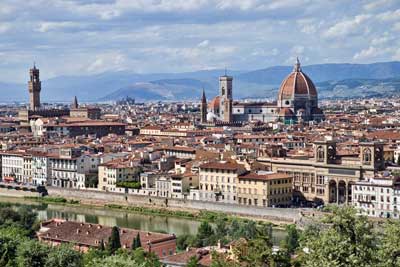
Rome also lives up to the hype and spending a day in the Vatican City will be a highlight even for non-Catholics, but it’s also a crowded and busy city so three days is usually enough for most people. Similar to Paris, Rome is an unusually beautiful city from almost any angle when you are in the historical center. You’ll walk through a stunning piazza (town square) and then turn a corner and you’ll see gorgeous buildings or public statues that are as nice as anything in the museums. Seriously, it’s worth a visit.
Paris to Venice flight: 1 hour 35 minutes
Venice to Florence by train: 1 hour 53 minutes
Florence to Rome by train: 1 hour 16 minutes
You can of course instead fly from Paris to Rome and then go north to Florence and then to Venice and fly home (or back to Paris) from there, and it would be just as enjoyable.
Best add-ons to Paris and Italy
France
- Nice/Cannes/Monaco (2 or 3 nights)
- Avignon (2 nights)
- Bourges (2 nights)
- Bordeaux (2 nights)
- Aix-en-Provence (2 nights)
- Reims (2 nights)
- Dijon/Burgundy (2 nights)
Italy
- Milan (1 or 2 nights)
- Lake Como (2 nights)
- Siena (2 nights)
- Cinque Terre (1 night)
- Naples/Sorrento/Amalfi Coast/Pompeii/Capri (3 to 5 nights)
- Sicily (3 to 4 nights)
>>>Much more information in this article about the best France and Italy itineraries
>>>Check Paris hotel deals
>>>Check Venice hotel deals
>>>Check Florence hotel deals
>>>Check Rome hotel deals
Itinerary 4: Mediterranean cruise
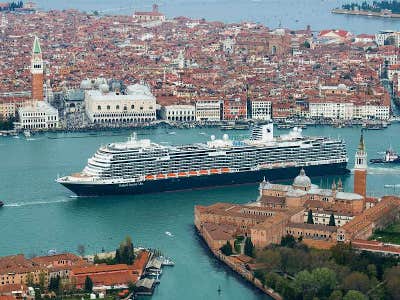
In spite of the reputation of cruises to be floating buffets, they can actually be an excellent way to visit a great number of amazing European cities in a short time. The ship typically is in port from the early morning until mid evening, often giving you the opportunity to have dinner in the city (unlike Caribbean cruises). Better still, the cruise ports are often near the center of town, so you can just walk off the ship and do sightseeing on foot or by public transportation.
Mediterranean cruises usually start at 7 nights but can go up to 3 weeks, which can provide an amazing tour of the entire region without having to pack and repack your bags more than once. They also can provide excellent value, especially compared to the price of taking trains or flights and finding new hotels in every destination.
Most popular Mediterranean departure ports
Barcelona, Spain – It’s an easy port to reach. Ships generally go from Barcelona with stops in France and then Italy.
Rome (Civitavecchia), Italy – The port isn’t very close to Rome, but it’s easy to get back and forth. Ships go west to France and Spain as well as south around the tip of Italy and then on to Croatia, Venice, and to Greece.
Venice, Italy – The cruise ships no longer dock close to the best tourist areas, but it’s easy enough to visit Venice for a day or two before boarding a ship. Ships starting in Venice go south and then head west and to Rome and then to France, or they go south to Croatia and then head east to Greece.
Athens, Greece – The cruise port of Piraeus is just south of Athens and easy to reach. Ships from Athens usually head west towards Croatia, Italy, France, and Spain, but there are also ships that visit Greek islands and Turkey.
>>>Check for deals on Mediterranean cruises
Alternative to consider: a river cruise
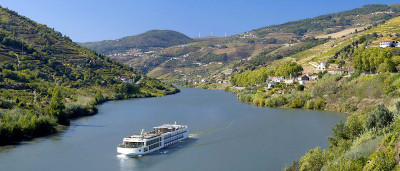
Amsterdam, Budapest, and Prague are some of the most popular river cruise ports, but there are dozens of others including many smaller towns in France where few other tourists will be when you stroll off the ship. There is little or no entertainment on the river cruise ships, but passengers don’t miss it because the entire day and into the evening is spent just steps from local cultural offerings and restaurants.
>>>Check for Europe and river cruise deals
Itinerary 5: France, Belgium, and Netherlands
Paris to Brussels: 1 hour 22 minutes
Brussels to Bruge: 58 minutes
Bruges to Amsterdam: 2 hours 45 minutes
Amsterdam to Paris: 3 hours 17 minutes
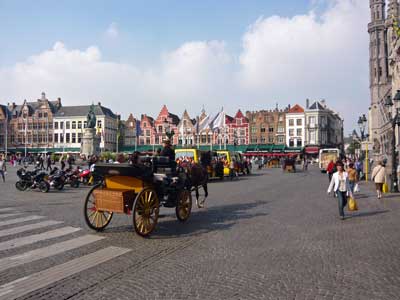
Spending 4 nights in Paris and 3 nights in Amsterdam would be a great trip, but if you want to see something else you’ve got a couple options in between. My advice is to spend an afternoon looking around the Grand Place (main square) in Brussels and then hop a 58-minute train ride to Bruges for a night or two. Brussels isn’t a great tourist city, but Bruges really is so it’s a better option for most people. Whatever you choose out of this group, you can be back in Paris on another high-speed train for your flight home.
Best add-ons to France, Belgium, and Netherlands
- Luxembourg City (1 or 2 nights)
- Cologne, Germany (1 or 2 nights)
- London (3 or 4 nights)
- Interlaken, Switzerland (2 or 3 nights)
>>>Check Paris hotel deals
>>>Check Bruges hotel deals
>>>Check Amsterdam hotel deals
Itinerary 6: Paris and elsewhere in France
- Paris (3 or 4 nights)
And a choice of:
- Nice/Cannes/Monaco (2 or 3 nights)
- Avignon (2 nights)
- Bourges (2 nights)
- Bordeaux (2 nights)
- Aix-en-Provence (2 nights)
- Reims (2 nights)
- Dijon/Burgundy (2 nights)
- Normandy (2 nights)
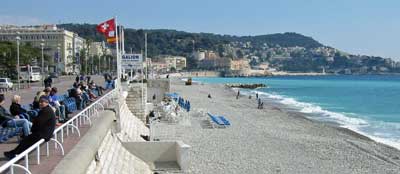
While Nice is a wonderful tourist city for a look at the French Riviera, the other larger cities of Lyon and Marseilles are probably better saved for a future trip because they are light on key sights compared to many smaller towns. Wine lovers can rent a car or take trains into Bordeaux or Burgundy. Since you can get between most of these towns by train in 2 hours or less, spending only 2 nights in each one is a reasonable option if you want to see a lot in a short time.
Normandy is an interesting choice and easy to reach in only about two hours by train from Paris. Some visitors like to see the famous WWII beaches and memorials, while others (especially in summer) like to check out one or more of the beach-resort towns. Deauville is one of the more famous of those, and it’s also famous for its horse race track and as one of the epicenters of the industry in Europe.
Best add-ons to Paris and elsewhere
- More France, of course
- London (3 or 4 nights)
- Interlaken, Switzerland (2 or 3 nights)
- Amsterdam (2 or 3 nights)
>>>Check Paris hotel deals
>>>Check Nice hotel deals
Itinerary 7: Italy
Rome to Florence: 1 hour 16 minutes
Florence to Venice: 1 hour 53 minutes
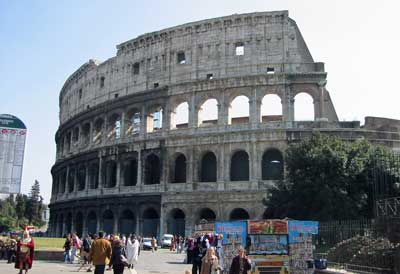
Venice is small enough that you can see the main sights in about 24 hours, and it’s so insanely crowded that many people tire of it after about a day as well. It’s better to pay more for a hotel to be on the main island and visit quickly than to save money with a hotel on the mainland where you’ll be in crowds going back and forth as well. Florence is the most relaxing of the 3, and also a great base for side trips to Pisa, Siena, and Cinque Terre, just to name a few.
Going to Italy? Here are the best first-time Italy itineraries for 3 days to 2 weeks (in much greater detail)
Best add-ons to Italy
- Milan (1 or 2 nights)
- Lake Como (2 nights)
- Siena (2 nights)
- Cinque Terre (1 night)
- Naples/Sorrento/Amalfi Coast/Pompeii/Capri (3 to 5 nights)
- Sicily (3 to 4 nights)
>>>Check Rome hotel deals
>>>Check Florence hotel deals
>>>Check Venice hotel deals
Itinerary 8: Spain
Madrid to Barcelona: 2 hours 30 minutes
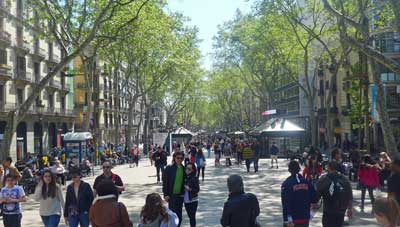
A huge part of Spain’s tourism industry is built around its southern beaches and islands such as Ibiza, Mallorca, and Tenerife (in the Canary Islands). For most people it’s best to ignore those places on your first trip because none of the beaches are special enough to spend days on them compared to the culture of the cities.
Best add-ons to Spain
By popular demand, I’ve added a full article on where to go in Spain with itineraries from 7 to 10 days up to two weeks.
>>>Check Madrid hotel deals
>>>Check Barcelona hotel deals
>>>Check Lisbon hotel deals
Itinerary 9: Germany
Berlin to Munich: 6 hours 2 minutes
Munich to Rothenburg ob der Tauber: 2 hours 56 minutes
Munich to Füssen: 2 hours 4 minutes
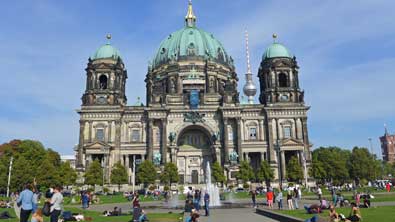
Those two cities are the keys to a Germany visit, and after that you’ve got a wide variety of choices. I cover most of the popular choices in my article on where to go in Germany, which covers several smaller towns that are major highlights.
Best add-ons to Germany
- Cologne (1 or 2 nights)
- Hamburg (2 or 3 nights)
- Amsterdam (3 nights)
- Prague (3 nights)
- Salzburg (2 or 3 nights)
- Vienna (3 nights)
- Interlaken, Switzerland (3 nights)
- Lucerne, Switzerland (2 or 3 nights)
>>>Check Berlin hotel deals
>>>Check Munich hotel deals
Itinerary 10: Switzerland
- Interlaken (3 nights)
- Bern (1 night)
- Lucerne (3 nights)
Zurich Airport to Interlaken: 2 hours 10 minutes
Interlaken to Bern: 53 minutes
Bern to Lucerne: 1 hour 50 minutes
Lucerne to Zurich Airport: 1 hour 3 minutes
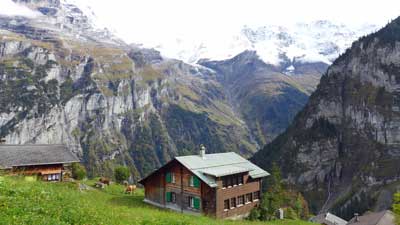
Interlaken is the best hub for the most dramatic Alps views and experiences. The one-hour cable car ride up to the Schilthorn observation deck is something you’ll never forget, and the only thing that might be more dramatic is the train ride up to the Jungfraujoch station, which is the highest in Europe. Lucerne is almost as beautiful with a scenic lake at its heart and also great mountaintop views nearby. If you do want to see a Swiss city then the capital of Bern is the most interesting and photogenic on a short visit. Read more about where to go in Switzerland for even more ideas.
Best add-ons to Switzerland
>>>Check Interlaken hotel deals
>>>Check Lucerne hotel deals
Itinerary 11: Eastern Europe’s best cheap cities
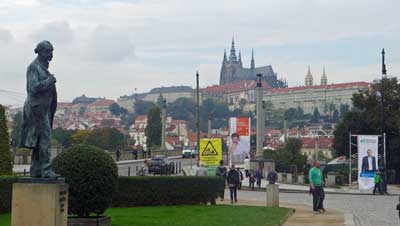
Each of these cities is beautiful and historic, but English is less widely spoken so they can also be quite a bit more challenging for a first-time visitor. Another difficulty is that the trains between them are still quite slow compared to the high-speed rail in the West, so it takes most of a day from one to another, and a bus is often a better choice. I cover this best cheap Europe itinerary more fully in the linked article.
Prague to Budapest: 6 hours 41 minutes
Budapest to Krakow: 9 hours 54 minutes (flying might be better)
Best add-ons to cheap Eastern Europe
- Cesky Krumlov, Czechia (2 nights)
- Ljubljana, Slovenia (2 or 3 nights)
- Split, Croatia (3 nights)
- Belgrade, Serbia (2 or 3 nights)
- Sarajevo, Bosnia and Herzegovina (2 or 3 nights)
- Sofia, Bulgaria (2 or 3 nights)
>>>Check Prague hotel deals
>>>Check Budapest hotel deals
>>>Check Krakow hotel deals


Hello,
My husband and I are planning a 2-week family vacation to Europe early June 2023. It is our first time there for all of us and our children are 18, 16 and 14. Could you suggest an itinerary for us and is it possible to see 5 cities in 2 weeks?
Thank you!
Hey Lori,
This sounds like it’s going to be a great trip and your kids will be old enough to really appreciate more than just the ice cream and whatnot. Actually, I have another article that should be the perfect place to start for this and I recently updated it. It’s the best first-time Europe itinerary for 5 great cities in two weeks. The cities I think are perfect for a first visit are London, Paris, Amsterdam, Venice, and Rome, and fortunately it’s pretty easy to string them together in two weeks.
So that is my first suggestion. That said, everyone’s tastes are a bit different and if you’d rather skip one or two of those and add in another one or two, there should be some ideas in the article above or let me know and I’ll try to help. -Roger
Good Morning, my father is wanting to take his kids on a two week European vacation, in the spring/early summer. I am the only that hasn’t been so they are leaving it up to me to decide where I want to go. I want to see at least London, Paris, and Venice. Can you tell me the best itinerary to use to get the most and if there are any other places we should include and when is the best time to go? I appreciate any and all advice you can give me.
Jennifer,
Interestingly enough, just yesterday I updated an article I wrote about the 5 cities not to miss on your first European trip, and how to string them together in a two week trip. The cities are London, Paris, Amsterdam, Venice, and Rome, so you are already most of the way there.
I’d recommend going anytime from mid April through mid June if possible. That will give you pleasant and generally warm weather (at least in Italy) along with smaller crowds and cheaper hotel prices. I’d say the second half of May would be just about perfect. I hope this helps and let me know if you have any other questions. -Roger
Thank you Roger, the more I think about it, I wonder if there are better options since my dad and brother have already been. I feel like I don’t necessarily need to see the “1st time attractions” my 1st time, maybe we should all go to new places together. I was thinking the following, we have 15 days…may be able to push it 18, Barcelona, Venice, Bern (one day maybe), somewhere in Germany, and if we have time maybe Paris. I know that is a lot of different spots. Out of those what is the best itinerary, and what would you take out if its too many places in one trip?
Jennifer,
Okay, that’s a bit of a twist then, but I think I understand. If you have 18 days you’ll definitely be able to properly visit 6 different places, although it’s obviously easier if those places are easy to reach from one another. With that in mind, your list is a bit unusual.
First off, Barcelona is fabulous and could be a great choice. It’s about 6 hours by high-speed train from Paris, which I prefer to flying because it’s obviously far more scenic and the time spent going to airports and waiting in security lines ends up being about the same as the train.
Venice is amazing and small enough (and so crowded) that seeing it in a day or two is best for most people. You can read more about my thoughts on Venice and Paris in this longer article about the best Italy and France itineraries. Long story short, if you are going to Venice it would be a shame not to also visit Rome and probably Florence as well.
Bern is an interesting choice and unfortunately not very efficient to visit, especially for one day. Bern is definitely my favorite of the Swiss cities, but it is small (so one day is about right) and it barely cracks the top ten of the best places to visit in Switzerland. The short version is that if you have a few days to spend (and I think you do), I would definitely go to the Interlaken area and maybe Bern for a day as well.
As for Germany, I feel that the best and most interesting place to visit first is Berlin, and you can read more about that in my article about the where to go in Germany.
So in summary, I don’t think you have too many places in mind on your new list, and I think you can add one or two, but it’s more that they are kind of an odd mix and most of them are not easy to reach from the others. The itineraries in the article above are all designed so that the stops are mostly a few hours apart by train, and that can be an amazing experience because those shorter train rides can be really scenic and enjoyable. If you end up having to take two-hour flights between places, you’ll end up spending too much time going to and from airports and waiting in security lines and such. I’m happy to help more if you have questions as I really enjoy this process. -Roger
Hello my husband and I are planning our 3 week honeymoon to Paris, Spain and Portugal. I was wondering if you can give advice on travel itinerary and in which order we should start with? How long we should stay in each area? Thank you!
Jenny,
That sounds like a great honeymoon. In three weeks you’ll have plenty of time to explore all of those places. In general I highly recommend spending 3 nights in just about any European city that you visit. If you go faster you’ll end up spending too much time on trains and in airports.
Especially on a honeymoon, I’d start in Paris for 4 nights or maybe even more. You’d want to spend at least 3 nights there just to see Paris, and in any extra days you’d have time for day trips like seeing some palaces in the Loire Valley or the beaches of Normandy. There are loads of great day trips from Paris you can do by train or bus and be back for another great dinner in the evening.
Then I’d take a train to Barcelona and spend 3 or 4 nights there. You’ll also for sure want to spend 3 nights in Madrid. During the warmer months it would also be great to spend a few nights in the Malaga area to visit the Costa del Sol. The other best stops would be Seville for 2 nights, Granada for 2 nights, Toledo (day trip from Madrid or 1 night).
It’s usually best then to fly into Lisbon and spend 3 or 4 nights there, including a day trip to Sintra. The other two classic stops are Porto for 2 or 3 days, and the Algarve beach area in the south of Portugal for 3 days or so. I really like Tavira, which is a cute little town that is also a wind-surfing hub.
Hopefully this at least gives you some ideas. I’m happy to help more if you have other questions. -Roger
Hi Roger,
Me and my Girlfriend want to do 2 week trip next month, end of september. Its our first time to Europe.
How many countries / cities would you recommend to cover in 2 weeks. We don’t want to rush and leave a bit of room for uncertainities that might hit us especially these days.
France and Italy?
Vikas,
As I think I mention in the article, I highly recommend staying 3 nights in almost any city you visit in Europe. That means in two weeks I’d choose 4 or 5 cities and probably no more than two countries.
France and Italy in two weeks is a perfect first-time to Europe itinerary. That article should help you figure out what is best for you, but the short version is I’d start in Paris for 3 or 4 nights and then visit Nice for 2 or 3 nights and then fly to Venice (or nearby Treviso) for about 24 hours before taking a train to Florence for 2 or 3 days and then finish up in Rome for 3 nights.
If you try to visit more places in two weeks then you will be spending half of your time on trains or airports or on your way to and from airports. I’m happy to help if you have any other questions. -Roger
Hi Roger. With five days in Barcelona this coming September, is it possible to squeeze in a day trip to Lisbon? Thanks much.
Mae,
The flights between the cities are almost two hours each way, and the whole process of getting to the airport and going through security and whatnot will take at least an hour or two on each end. In other words, if you left your Barcelona hotel at, say, 7 AM, you’d land in Lisbon around 11 AM and reach the city center around noon. You’d have to leave by 6 PM or so in order to be back at your hotel by 10 PM or 11PM. I’m not sure that it’s worth it and Lisbon doesn’t really have any blockbuster sights so you mainly would just walk around the historic center. It might be worth it if you stayed at least one night, so you’d have 30 hours in Lisbon instead of just 6. I hope that helps. -Roger
Planning a December trip in 2023 for three- to four-weeks with my husband and teenage daughter. We have never been to Europe. We would like to see England, Switzerland, Slovenia, and Italy.
Suggestions?
Deborah,
With 3 to 4 weeks I’d probably spend 7 to 10 days in England and Scotland. You can look at the itineraries that include them above for some specifics. I’d also spend 7 to 10 days in Italy and again, you’ll see some suggestions for that in the article above, or more details in this article about Italy itineraries.
As for Switzerland, I’d spend a week if possible. It’s quite expensive, even compared to England, but it has the most amazing scenery in Europe and possibly in the world. Here’s my suggestions for where to go in Switzerland. As for Slovenia, I’d spend two days in Ljubljana and two days enjoying Lake Bled and/or the karst towers. You can even see those as day trips from the capital if you prefer. I hope this at least helps you get started. Let me know if you have any other questions. -Roger
Hello, we are couple travelling to Europe and looking for some itinerary help.
We are arriving in London and would like to spend 2 days. We will travelling during the period Sep end to early October for about 10 days.
We have visited Paris so would skip that for this time. Could you help us with your suggestion.
Safina,
If you are planning on spending two days in London in late September and then want to go somewhere other than Paris for 8 to 10 more days, I’d suggest Italy first if you haven’t been. The classic combination of Rome, Florence, and Venice is perfect in 7 or 8 days and the weather should be nice then as well.
The article above contains my top suggestions along with the classics that are popular with other travelers. I’m happy to help you build an itinerary with a bit more information for what you are looking for. -Roger
Hello,
For 14 days in April 2023 we would like to do Venice, Paris, Normandy, Prague, Amsterdam and Brussels, is that doable?
Thanks!
Tina,
Yes, that’s definitely doable. The only tricky part is that Prague and Venice are quite remote from the others so you’d be best off flying in and out of those. You could start in Paris for 3 or 4 nights. Normandy, as you probably know, is about two hours by train from Paris and you can actually visit many interesting parts of it as day trips by bus or train. Some people like to visit the WWII beaches and other people like to visit the beach resort towns such as Deauville (definitely not beach weather in April though). It depends on what you want to see and do.
Then you can get back to Paris and take a train to Brussels, which takes a bit over two hours. I’d spend maybe two nights there. I personally find it a bit dull compared to the other ones on your list. Then a train to Amsterdam in about an hour and spend 3 nights or so there.
From Amsterdam it would be best to fly to Prague or Venice and then fly to the other one, and then home from there (or maybe back to Paris for a round-trip flight home. Prague is definitely worth 3 nights, but Venice is small enough that 2 nights is probably sufficient. As always, I hope this helps and let me know if you have any other questions. -Roger
Thanks Roger! I really appreciate the help.
Definitely enjoyed reading your information. We are planning a trip in 2023 and have 14 days. I’d like to visit London, Edinburgh, Paris and Barcelona. Do you think this is possible? Fly into London, spend 2 days in Scotland, then travel to Paris, a few days in Spain and then fly out of London. Day 1 & 14 are traveling days for flying out.
Ian,
Yes, I definitely think that is doable. My advice would be to spend at least three nights in London and then take a high-speed train to Edinburgh, which should be booked well in advance, and spend a couple days there. The other option would be to go to Inverness, which is the main town in the Scottish Highlands and a great place to see the amazing scenery. Edinburgh is quite like London, at least on the surface.
From Edinburgh you could fly to Paris and spend at least 3 nights there. You could then take a fast train down to Barcelona for a few days in Spain. I don’t think you have enough time to visit Barcelona AND Madrid, so I’d choose just one. I’m happy to help more if you have any other questions. -Roger
I would like to sugget Mr. Ian that 3 days in London is not at all sufficient. Atleast he should keep four days. First two days he should spend visiting three best museums- British museum, V&A museum and Natural History museum. They are wor5ld class museums. On these two days only, he can see Buckingham palace( preferably he should be there by 10.30, not to miss Change of guards ceremoney),Hyde park, Famous Trifaulga square and Picadelly squares,which could be seen even in the evening, after seeing museums. On the third day he should move around Parliament house, seeing Westminist3r’s Abbey Church(filled with many artistic pieces and graves), Churchill war museum, Take a round in London Eye, etc. On the fourth day, he can visit Shakespeare’s Globe theatre, take a cruise trip from there,on the Thames, and get down on the other side, and visit Tower bridge, Cathedril etc. He can take a train that night to Edinburgh. Two days are enough for Edinburgh.I did so in 2016.
Comment*
Just reading your blog and it has been very helpful. Just looking for some itinerary help. We are planning a trip to Central Europe hopefully for next year. We are planning on approx. 3 weeks and are thinking of visiting: Berlin, Munich, Krakow, Prague, Vienna, Salzburg and maybe Budapest. Any thoughts on the best order for ease of travel. We are debating between taking a train or renting a car. Any thoughts, if this is to much, any places we should add or just any ideas. Like I said we are just at the beginning of planning so any advise would be greatly appreciated.
Valerie,
First off, I’d definitely do the train instead of renting a car. Renting a car for some types of Europe trips can be a good idea (going between small towns or nature areas etc), but for going between large cities a car is a liability. There are very few worthwhile attractions that have parking (free or paid) so you’d end up having to pay maybe US$25 per day or more to park your car for a few days while you are sightseeing, and then do it over again in each other city. On the other hand, trains are really a joy in most of Europe, and if you buy your train tickets far enough in advance, they are pretty cheap as well.
It mostly depends on which city you can most easily (or affordably) fly into and then which city you can fly out of. In many cases it’s much cheaper to fly in and out of the same city, so you’d end up doing a loop. But if you could fly into, say, Krakow, and out of Budapest, you can save time by not having to backtrack. It’s usually easier to get the best airfares into the bigger airports, so Berlin and Munich might have the best deals. Once you get that sorted out it’s pretty easy to figure out the best order to go in. I’m happy to help if you have any other questions. -Roger